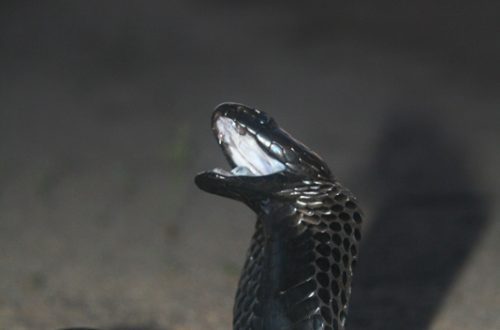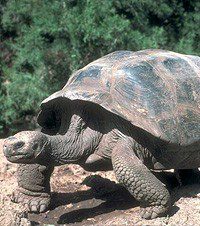
Central Asian tortoise
Unpretentious and pretty Central Asian turtles are the favorite pets of people around the world. Contrary to stereotypes, they are very active and agile, and also smart and quick-witted. Due to their ingenuity, Central Asian tortoises often escape from their seemingly safe enclosures and terrariums.
The Central Asian tortoise is a fairly popular pet. This is a land herbivorous turtle, quite unpretentious in maintenance and not very large: the length of the shell is on average from 15 to 25 cm, with males being smaller than females, and small turtles at birth are only 3 cm long.
The rounded shell of the Central Asian tortoise is colored greenish or olive-brown, and may also have dark spots on it. On the shields of the shell there are grooves that can be used to determine the age of the turtle. The limbs, head and neck are colored brown-yellow. The Central Asian tortoise has 4 fingers on its paws.
These pets grow throughout their lives, and reach sexual maturity at about 10 years (females) and 6 years (males). The sex of the turtle can be determined by the tail and plastron: the tail of males is longer and thicker at the base, and the cloaca is located further from the base of the tail than that of females, in addition, females have a flatter plastron. Females are somewhat larger than males.

The average lifespan of a Central Asian tortoise in captivity is about 30 years. Under ideal conditions, the bar rises to 40 years or more.
Central Asian turtles are friendly and unpretentious, but require special care and attention.
At home, they are kept in spacious aquariums and terrariums (the optimal area for one turtle is 60 * 130 cm). In a cramped space, they feel bad and often get sick. Since in the wild, Central Asian turtles dig holes for themselves and often fiddle in the ground, a layer of earth is also placed on the bottom of the terrarium. Sand in this regard is an extremely undesirable solution: turtles often accidentally swallow it and die from this over time.
In the summer months, it is ideal to keep turtles in an open-air cage (2 * 2 m) in the open air, for example, in a summer cottage. These pets calmly tolerate temperature changes and spend the night quite comfortably at a temperature of 10? C.
If your pet does not have the opportunity to equip a mink for himself, be sure to install a house (half of a pot, a box, etc.) in his aviary or terrarium, where the turtle can rest from time to time.
Central Asian turtles are passionate diggers, they often run away from their homes. To prevent an agile pet from escaping, purchase durable terrariums, and when kept outdoors, deepen the walls of the fence into the ground by at least 30 cm. The height of the fence above ground level should also be the same.
We are accustomed to consider turtles clumsy and slow, but many representatives of this detachment, like, for example, our Central Asian tortoise, are incredibly active, mobile and can develop impressive speed. Such features of the pet must be taken into account by the owners.
A container with water is installed in the turtle’s terrarium or enclosure, into which it can climb to drink or refresh itself. To maintain the water balance once a week, pets need to be bathed in a bath with warm water (the optimal water level in the bath is up to the turtle’s neck). Also, several large stones are placed in the terrarium or aviary: in nature, turtles like to climb onto stones and bask on them under the sun.
When living in an apartment, an incandescent lamp and a special ultraviolet lamp for reptiles are installed in a terrarium or aquarium. Light and heat are necessary for the turtle to maintain health and proper growth and development. Without UV rays, the shell and bones of a turtle will be underdeveloped and weak, as the body will not be able to absorb calcium in the quantities it needs. Install the lamps at a height of 20 cm, at a lower height the turtle will get a serious burn, and at a height of more than 30 cm, the effect of the lamps will be negligible. Lamps should work throughout the daylight hours, i.e. within 12 hours.
The optimum temperature in the terrarium should be from +25 to 27?C, and in the area under the lamps from +30 to 33?C.
Central Asian turtles are herbivores, and the basis of their diet is plant foods: greens, as well as various vegetables and fruits. The optimal solution is high-quality ready-made rations for herbivorous turtles, in which all the necessary elements are balanced.
The main guarantee of well-being of the Central Asian tortoise is space and comfort. In no case do not doom a moving pet to life in a cramped space.
Turtles are native to Central Asia, steppes from China to Kazakhstan and Uzbekistan.
Turtles choose hilly or rocky areas with abundant vegetation and high humidity as habitats. The local ground should be soft enough for the turtles to dig their own holes.
Despite the rather high abundance and prevalence, Central Asian tortoises are listed in the Red Book.





